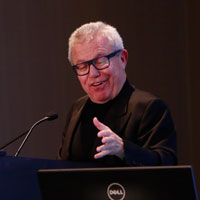Filter by
You must be a CTBUH Member to view this resource.
Haeundae I Park Marina Tower 1
Building
Completed, 2011
residential
composite
272.9 m / 895 ft
66
6
You must be a CTBUH Member to view this resource.
You must be a CTBUH Member to view this resource.
Usually involved in the front end design, with a "typical" condition being that of a leadership role through either Schematic Design or Design Development, and then a monitoring role through the CD and CA phases.
The Design Engineer is usually involved in the front end design, typically taking the leadership role in the Schematic Design and Design Development, and then a monitoring role through the CD and CA phases.
The Engineer of Record takes the balance of the engineering effort not executed by the “Design Engineer,” typically responsible for construction documents, conforming to local codes, etc.
The Design Engineer is usually involved in the front end design, typically taking the leadership role in the Schematic Design and Design Development, and then a monitoring role through the CD and CA phases.
Other Consultant refers to other organizations which provided significant consultation services for a building project (e.g. wind consultants, environmental consultants, fire and life safety consultants, etc).
You must be a CTBUH Member to view this resource.
Usually involved in the front end design, with a "typical" condition being that of a leadership role through either Schematic Design or Design Development, and then a monitoring role through the CD and CA phases.
Usually takes on the balance of the architectural effort not executed by the "Design Architect," typically responsible for the construction documents, conforming to local codes, etc. May often be referred to as "Executive," "Associate," or "Local" Architect, however, for consistency CTBUH uses the term "Architect of Record" exclusively.
The Design Engineer is usually involved in the front end design, typically taking the leadership role in the Schematic Design and Design Development, and then a monitoring role through the CD and CA phases.
The Engineer of Record takes the balance of the engineering effort not executed by the “Design Engineer,” typically responsible for construction documents, conforming to local codes, etc.
The Design Engineer is usually involved in the front end design, typically taking the leadership role in the Schematic Design and Design Development, and then a monitoring role through the CD and CA phases.
The Engineer of Record takes the balance of the engineering effort not executed by the “Design Engineer,” typically responsible for construction documents, conforming to local codes, etc.
The main contractor is the supervisory contractor of all construction work on a project, management of sub-contractors and vendors, etc. May be referred to as "Construction Manager," however, for consistency CTBUH uses the term "Main Contractor" exclusively.
Other Consultant refers to other organizations which provided significant consultation services for a building project (e.g. wind consultants, environmental consultants, fire and life safety consultants, etc).
CTBUH Releases Year in Review: Tall Trends of 2011
31 December 2011 - CTBUH Journal
Haeundae I'Park Chosen as Featured Building
1 October 2011 - Featured Building

27 October 2015 | Busan
From New York to Busan: Reflecting Culture in Urban Design
Overpopulation, climate change, aging infrastructure: the threats facing tomorrow’s cities are, in many ways, design problems. The challenges of today’s world have to be solved...

31 December 2011
Year in Review: Tall Trends of 2011
Nathaniel Hollister & Antony Wood, CTBUH
The annual story is becoming a familiar one: 2007, 2008, 2009, 2010, and now 2011 have each sequentially broke the record for the most 200...
The concept of the project was to build a powerful and unique icon expressed in a dynamic volume on the Busan waterfront. The development includes three high-rise residential towers (with 1631 units), a nine-story office building and a three-story retail building. The curvilinear geometry of the buildings plays with concepts of traditional Korean architecture, often derived from natural beauty such as the grace of an ocean wave. The sculpted forms of the composition, read against the city of Busan, create an iconic whole that is greater than the sum of its parts.
The footprints of the towers are each made of differing unusual shapes, extruded vertically with the profiles tapered only at their crowns. The heights of the towers are varied to create a sculptural composition on the horizon. These elements break down the massing of the towers and help to maximize the view corridors of all the apartments as well as bring the most light possible into the developments beyond the site. The project maintains efficient floor plates and repeatable construction.

31 December 2011
Year in Review: Tall Trends of 2011
The annual story is becoming a familiar one: 2007, 2008, 2009, 2010, and now 2011 have each sequentially broke the record for the most 200...

01 November 2011
Case Study: Haeundae I'Park, Busan
The I'Park development creates a new, forward-looking image for the Hyundai Development Company and a new vision for residential living in Busan. In South Korea,...
31 December 2011
The annual story is becoming a familiar one: 2007, 2008, 2009, 2010, and now 2011 have each sequentially broke the record for the most 200 meter or higher buildings completed in a given year. Once again, more 200 m+ buildings were completed in 2011 than in any year previous.
Subscribe below to receive periodic updates from CTBUH on the latest Tall Building and Urban news and CTBUH initiatives, including our monthly newsletter. Fields with a red asterisk (*) next to them are required.
View our privacy policy